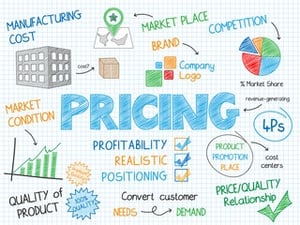As readers of my blogs hopefully know, I dedicate this space and your investment of time to  interesting and applicable topics related to the subjects of Business Acumen, Business Leadership, and Strategic Business Selling. I try hard to present different perspectives and include unique ideas that help build skills and the ability for you to make up your own mind and take your own actions in business decision making. A topic such as the government’s role in reducing pharmaceutical pricing is not an easy one and can lead to political debate which takes away from the learning debate. As I spend a lot of time working with clients in the health care space, this is a topic worth discussing and I do so with every intention of being as unbiased and non-political as possible.
interesting and applicable topics related to the subjects of Business Acumen, Business Leadership, and Strategic Business Selling. I try hard to present different perspectives and include unique ideas that help build skills and the ability for you to make up your own mind and take your own actions in business decision making. A topic such as the government’s role in reducing pharmaceutical pricing is not an easy one and can lead to political debate which takes away from the learning debate. As I spend a lot of time working with clients in the health care space, this is a topic worth discussing and I do so with every intention of being as unbiased and non-political as possible.
Business Acumen teaches us that to survive as a business entity, your revenues must be greater than your expenses. And when your expenses for new product development are in the billions (12%-25% of your revenues with extremely high risk), then you must continue to generate ongoing revenues and profits to sustained continued investments in new medicines. In our lifetimes and certainly in the lifetimes of our children, we will see cures for cancer, deadly viruses, heart disease, diabetes, and many other illnesses because of these continued investments.
During the 2016 election, President Trump used a lot of rhetoric to campaign for drastic reforms to lower drug prices. At one point he claimed that pharmaceutical companies were “getting away with murder” when talking about the prices being charged to patients and payers such as the US government and implied that once in office he would take drastic actions.
Last month, the administration took actions and modified the government’s approach to health care and pharmaceutical companies. From a pure business acumen perspective, it seems these actions are well designed and won’t radically change the great work that pharmaceutical companies do on our behalf.
The core of President Trumps reforms are to focus on more competition, more transparency, and more streamlined processes to overcome unnecessary costs that are being put on an already-overburdened payer system.
US Drug prices are unnecessarily high because of inefficiencies in the convoluted distribution system that finds rebates and discounts being put into the pockets of “middle-men” with their hands out instead of the payers and the consumers.
Here is a summary of a few of what I think are the most important elements of the new plan from a business acumen perspective:
Transparent Pricing
The new approach finally allows pharmaceutical companies to publicly disclose list and average wholesale prices so there is no mystery and more importantly no opportunity for middlemen to gouge all sides including government agencies who are legally barred from direct negotiations with the pharmaceutical companies. This will take some time but will have a major and positive impact on the system over the long term.
Easier OTC Policies
The new approach will enable pharmaceutical companies to effectively speeding up the process for popular (and effective) drugs to go over the counter (OTC) so consumers can purchase them quicker and cheaper and again cut out all of the middlemen in the process.
Incentivize Drug Manufacturers to Provide Generic Drugs for Free
Another part of the new approach will help everyone by providing tax and other incentives to pharmaceutical companies to provide generic drugs directly to seniors and the underprivileged for free
Protectionism against foreign government negotiation tactics
The new approach supports US Pharmaceutical companies against aggressive expectations of steep price discounting to foreign government (some people will go so far as to say these governments are “extorting” US companies by blocking free trade) which results in higher prices for US consumers.
Streamlining how Medicare pays for drugs provided to patients in their doctor’s offices
The current system is difficult to navigate and there are too many entities in the ecosystem trying to take their slice of a shrinking pie. The new approach will make it easier for doctors and nurses to administer drugs in the office and not have to go through so many third parties for distribution and then payment.
In summary, and separating the politics from the Business Acumen, this is a very well thought out approach that will benefit everyone in the ecosystem by allowing pharmaceutical companies to continue to take on risk and make investments in future drugs while also reducing significant burdens off the packs of patients and payers by eliminating the complexities of the middlemen.



